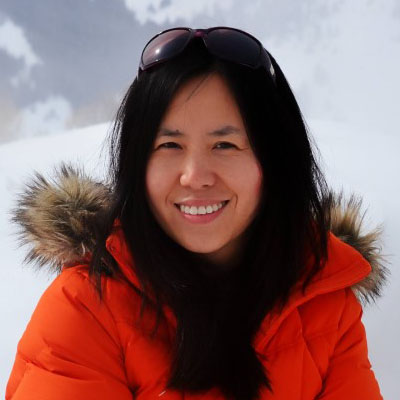From the Program Manager, Aug ’20: Transitioning to Version 2
As we are all settling into a new way of working, the E3SM team has been continuing to make good progress over past few months. The E3SM version 1 (v1) simulation campaign is nearly complete and the team is working hard toward finalizing version 2 (v2) of E3SM scheduled for this September. Learning from the E3SM v1 tag experience and recognizing the distinct development needs for the three campaigns which resulted in three separate v1 code tags, the v2 schedule will also be staggered. The Biogeochemical Cycles (BGC) and Cryosphere campaigns will use the Water Cycle code as a base for their campaigns, hence by necessity, the v2 Water Cycle development will be completed and tagged first, followed by the BGC and Crysophere v2 code tags. Working together, each individual core group and Next Generation Development (NGD) group has made many exciting advancements; I encourage you to visit the highlighted stories in this newsletter and recently published results .
In August 2020, the E3SM project expanded its dedicated computational resources by purchasing a new system funded by the Department of Energy (DOE) Office of Biological and Environmental Research (BER). This new machine named “Chrysalis” will be a dedicated resource for E3SM development to satisfy ongoing CPU needs which is a component of the progress toward the model’s full adaption to GPU. The installation started mid-August, and the early user period is expected to begin in the middle of October, with cluster and storage available to all E3SM users at the end of October.
Thanks to the input from a talented pool of reviewers with a wide range of expertise, BER has selected a number of Early Career awards and university awards including those with close relevance to E3SM. Congratulations to all and thanks in advance for your hard work and contribution to E3SM development. I also want to acknowledge all the colleagues who developed and submitted proposals – the quality of the applications was high. Please don’t be discouraged if you did not receive an award in this round, as we all know it is a highly competitive process. Please keep an eye on future funding opportunities and we sincerely welcome and value your contribution.
As the E3SM progresses, the E3SM team is devoted to supporting a growing community of external users that work with E3SM data or aspects of the E3SM model. A series of prerecorded online E3SM tutorial sessions have been developed, which are designed for new users.
The DOE E3SM team effort is not alone. During past few months, there have been numerous, enthusiastic discussions about the ways through which Earth system predictability could be extended. Discussions center around collaborative efforts across agencies which would include scientists from the US and international institutions. The recently held, virtual Workshop on Earth System Predictability Research and Development was a key component in these lively discussions. To improve the coordination and communication of national climate modeling goals and objectives, USGCRP’s Interagency Group on Integrative Modeling (IGIM) has been convening an annual U.S. Climate Modeling Summit (USCMS) since 2015. This June, the 6th US Climate Modeling Summit (USCMS) was held virtually. During the summit, the participants had multiple discussion sessions on collaborative efforts in the coming year including a new initiative on comparing liquid water and cloud condensation nuclei processes (arising out of the Global Model Cloud-Aerosol Research (GM-CAR) workshop discussions), and exploration of coordinated COVID19-related emission reduction impacts on air quality and climate.

Dr. Cristiana Stan recently joined EESM under an Intergovernmental Personnel Act (IPA) Assignment from George Mason University.
Please mark your calendars for the coming ESMD/E3SM PI meeting this October and E3SM internal review (if you are involved) this November. I look forward to your presentations and our discussions on how we can best advance E3SM predictability and capability to support DOE’s mission.
The last but not the least, I want to introduce and acknowledge Dr. Cristiana Stan, who recently joined DOE/EESM. She is helping across the three EESM program areas and has been a big help on this newsletter. She is also working with me in the planning of the upcoming PI meeting. Please welcome her and support her work when needed.
Thanks to all and I hope you and your family continue to be safe and healthy!
Xujing



